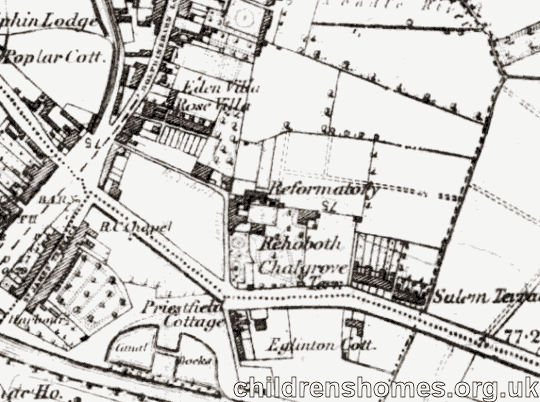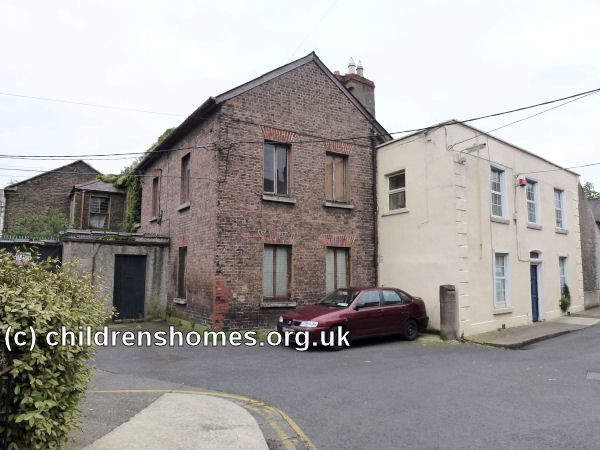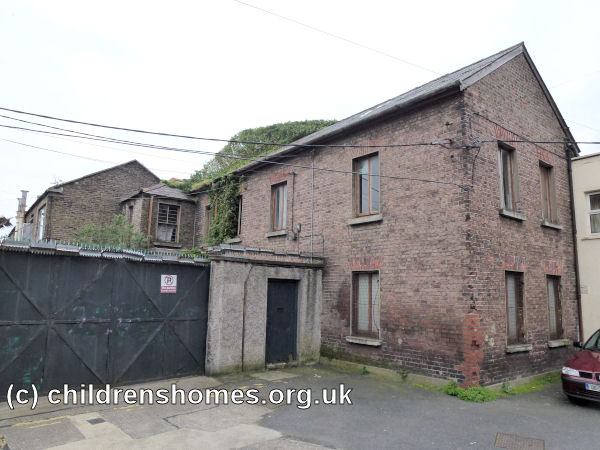Protestant Reformatory for Boys, Dublin, Ireland
On 18 November 1859, Reformatory for Protestant Boys was certified to begin operation at 3 Rehoboth Place, off Dublin's South Circular Road. It was under the direction of the same committee as the girl's reformatory on Cork Street. The premises could accommodate up to 40 boys, aged from 7 to 14 years at their date of admission.
An inspection in 1861 recorded that there were 17 inmates in residence, who were employed on the land surrounding the school. There were also plans to introduce evening instruction in tailoring. A mark system was in use, whereby privileges could be earned by good conduct. The superintendent was Mr Barclay. By the following year, Mr Thomas Hanna had taken charge of the establishment, with Mrs Hanna as matron. The average monthly total of inmates had risen to 23. A tailor now attended for several hours each day to instruct the boys in his trade but market gardening was still their chief occupation. The school's committee were negotiating to add an adjacent plot of seven acres to its existing 2.5 acres of land.
The School site is shown on the 1880 map below.

Protestant Boys' Reformatory site, Dublin, c.1880.

Former Protestant Boys' Reformatory site from the north-west, Dublin, 2014. © Peter Higginbotham

Former Protestant Boys' Reformatory site, Dublin, 2014. © Peter Higginbotham
The inspection report for 1870 recorded that the daily average number of inmates was now 37. Six acres of land were now under cultivation, producing vegetables which were sold at good prices at Dublin market. Other industrial training included shoemaking and tailoring and the boys made and repaired all their own clothes. They also performed all the necessary household work of the institution.
A new carpentry workshop was erected in 1876 and a four-horsepower portable steam engine installed to drive two circular saws and four wood-turning lathes.
Following a decline in the number of boys being committed to the institution, it was closed in August 1890.
Records
Note: many repositories impose a closure period of up to 100 years for records identifying individuals. Before travelling a long distance, always check that the records you want to consult will be available.
- None identfied at present — any information welcome.
Bibliography
- Carpenter, Mary Reformatory Schools, for the Children of the Perishing and Dangerous Classes, and for Juvenile Offenders (1851, General Books; various reprints available)
- Carlebach, Julius Caring for Children in Trouble (1970, Routledge & Kegan Paul)
- Higginbotham, Peter Children's Homes: A History of Institutional Care for Britain's Young (2017, Pen & Sword)
- Abel Smith, Doroth Crouchfield: A History of the Herts Training School 1857-1982 (2008, Able Publishing)
- Garnett, Emmeline Juvenile offenders in Victorian Lancashire: W J Garnnett and the Bleasdale Reformatory (2008, Regional Heritage Centre, Lancaster University)
- Hicks, J.D. The Yorkshire Catholic Reformatory, Market Weighton (1996, East Yorkshire Local History Society)
- Slocombe, Ivor Wiltshire Reformatory for Boys, Warminster, 1856-1924 (2005, Hobnob Press)
- Duckworth, J.S. The Hardwicke Reformatory School, Gloucestershire (in Transactions of the Bristol and Gloucestershire Archaeological Society, 1995, Vol. 113, 151-165)
Links
- Glencree Reconciliation Centre (former Reformatory site)
- The Commission to Inquire into Child Abuse
Except where indicated, this page () © Peter Higginbotham. Contents may not be reproduced without permission.


